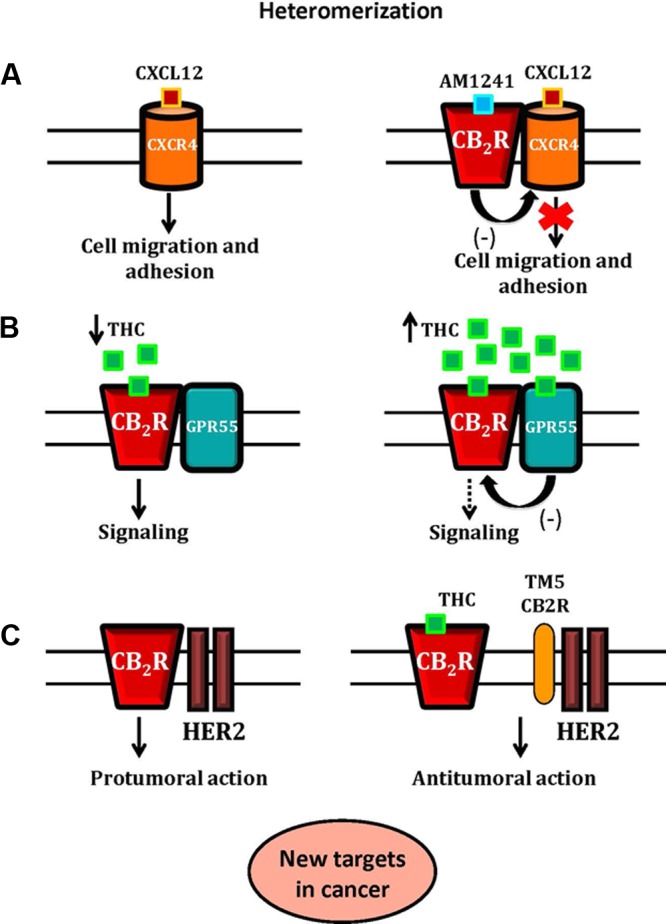FIGURE 2.

A schematic representation of CB2R-CXCR4, CB2R-GPR55 and CB2R-HER2 heteromers and their role as new targets in cancer. In Panel (A), the activation of CB2R-CXCR4 heteromers inhibits prostate cancer cell migration and adhesion. The binding of CXCL12 to its receptor, CXCR4, induces CXCR4-mediated cell migration and adhesion. The application of both CXCR4 and CB2R agonists inhibits the effect of CXCR4 agonist, due to the presence of functional CB2R-CXCR4 heteromers. In Panel (B), the hypothetical effect of THC on the CB2R-GPR55 heteromer. At low concentrations, THC acts as a CB2R agonist promoting signaling. At higher concentrations, THC targets GPR55, acting as an antagonist, and by cross-antagonism, inhibits CB2R signaling. In Panel (C), the proposed mechanism of control of the CB2R-HER2 heteromer in breast cancer is shown. The HER2-CB2R heteromer is disrupted by THC or by using a synthetic peptide with the amino acid sequence of specific transmembrane 5 domain (TM5) of the CB2R, triggering the inactivation of HER2 and producing antitumor responses.
